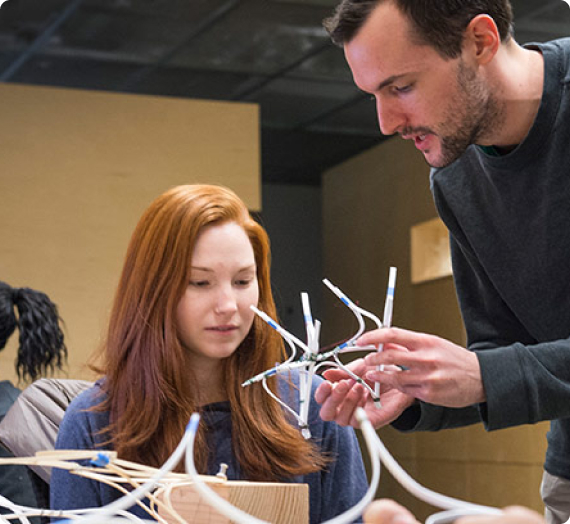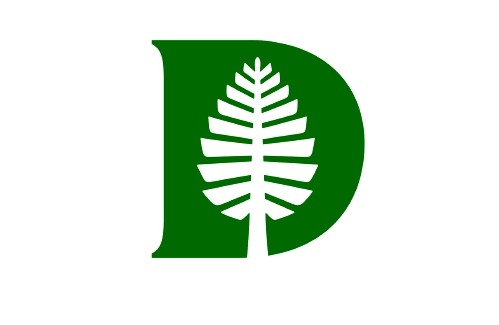Join Us for the 2025 a2ru Conference
Creative Futures: Driving Interdisciplinary Innovation Through the Arts
October 23-25, 2025 at the University of Wisconsin—Madison
Registration Now Open! Early Bird Rates End 6/30!
Featured

a2ru Ground Works Awarded 2025 ACLS Digital Justice Development Grant for “Reco(r)ding CripTech”
The program supports digital humanities projects that enrich cultural heritage through the intentional use of technolog
Blog; a2ru News, Funding, Ground Works
Upcoming Events
Mapping Creative Futures: A Community Conversation
2025 a2ru Conference: “Creative Futures: Driving Interdisciplinary Innovation Through the Arts”
Nominations Now Open for 2025 a2ru Awards for Excellence in Arts in Health Education
This award is now in its third year
“Centering the Arts in the Age of AI: Advancing Education, Innovation, and Workforce Development through Creative Practices” Executive Summary Now Available
This new report synthesizes findings and recommendations from the 2024 "Creativity, Empathy and AI' symposium
a2ru Seeks Executive Committee Nominations for 2025
Elected leaders will serve three year terms starting in September
a2ru Publications
a2ru’s online, peer-reviewed journals highlight outstanding arts-integrative research and pedagogy in higher education, providing valuable opportunities for scholars to share their innovative, field-building work.
Learn more about a2ru Journals
Tradition Innovations in Arts, Design, and Media Higher Education
Published in partnership with a2ru partner institution UNLV, Tradition Innovations provides a multimedia forum to explore how evolving digital technologies foster innovation in the interwoven work of teaching-researching-creating, while supporting the best of traditional practices in arts, design, and media disciplines.a2ru Working Groups
a2ru Working Groups provide year-round opportunities for our members to share knowledge and best practices, collaboratively develop action and research plans, and to pursue shared funding.
JOIN THE CONVERSATION
Member Spotlight
The University of Nevada, Las Vegas’s College of Fine Arts, a creative nexus anchored within the vibrant and diverse culture of Las Vegas, boldly launches visionaries who transform the global community through collaboration, scholarship, and innovation. Being a student of fine arts means heightening your physical, intellectual and cultural awareness. UNLV’s fine arts program prepares students for professional careers by helping them hone and perfect their talents. A wide array of campus venues, including theatres, performance halls, studios and an architectural library, are available to students as they pursue their passions. Our artist-in-residence program brings pre-eminent creators to UNLV. It also brings them into the classroom.
At UNLV we illuminate the power of the arts amidst breathtaking advancements in science and technology. In doing so, we are creating a global destination at the forefront of transforming arts and design. To accomplish this we encourage agency, inventiveness, problem-solving, and big-idea thinking in our students, faculty, and staff. We make education relevant through curriculum and effective learning outcomes. We are passionate and compassionate, principled and supportive, joyful and kind. We believe in inclusion, invention, transformation, engagement, and rigor. These vital principles underpin all our efforts and guide us in fulfilling our mission.
The UNLV College of Fine Arts includes the School of Architecture, School of Music, Department of Art, Department of Dance, Entertainment Engineering and Design, Department of Film, Department of Theatre, and UNLV Performing Arts Center.
The Arts at Virginia Tech
The arts at Virginia Tech are deeply embedded in teaching, research, and the student experience at Virginia Tech. Academic programs in the arts are found at the College of Liberal Arts and Human Sciences, the College of Architecture and Urban Studies, the School of Visual Arts, the School of Performing Arts, and the School of Architecture and Design. The Moss Arts Center operates as both a presenting organization and as a 147,000-square-foot, top-caliber arts center; it is a thriving community where the arts are a catalyst for engagement, inspiration, and discovery. Powered by advanced technology and networks of creative people, ICAT, the Institute for Creativity, Arts, and Technology, brings together and supports teams of faculty and students from across academic disciplines to address grand challenges and creative opportunities, ranging from large societal problems to industry-specific issues to the frontiers of artistic expression.
The Arts at Dartmouth
An interdisciplinary approach to the arts is pervasive at Dartmouth College; the Departments of Film & Media Studies, Studio Art, Theater, and Music collaborate with cross-campus partners like the Departments of Native and Indigenous Studies and Environmental Studies. The Hopkins Center for the Arts is home to a leading international arts presenting series as well as the Dartmouth Dance & Music Ensembles featuring student performers. The Hood Museum of Art and the Black Family Visual Arts Center are both part of a reenvisioned Arts District for the College. Students embrace interdisciplinary solutions to complex contemporary problems at the DALI (Digital Applied Learning and Innovation) Lab and the Arthur L. Irving Institute for Energy and Society. The Digital Arts program offers both an undergraduate minor and a Master’s Degree in the Computer Science Department; it intersects with studio art, film, theater, engineering, music, and design and explores the relationship between computation, art, and society.

The Creative Placemaking Resource Hub is a living archive of creative placemaking and placekeeping scholarship and practice, building on the archives of ArtPlace America’s decade of field-building work. It is designed for the students, teachers, artists, and community leaders who move the field forward.
Learn More





